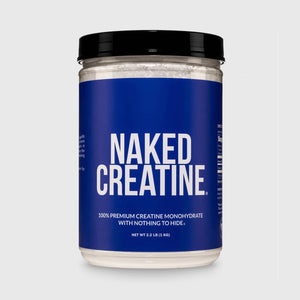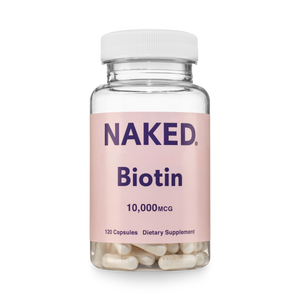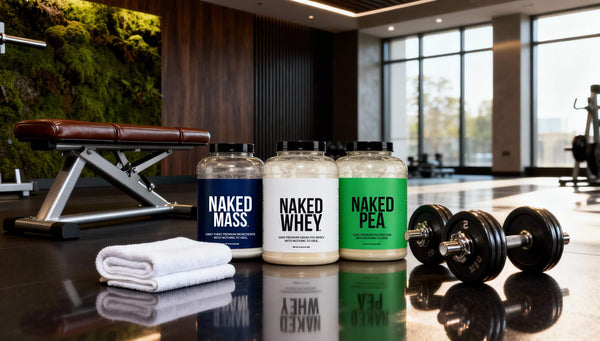For most people who work out, the goal when stepping in the gym is body recomposition.
But changing your body composition is no easy task. It takes a long time, especially if you stick to healthy, sustainable methods.
With that in mind, you might be thinking - how long does body recomposition take? That's exactly what we'll answer below, along with everything else you need to know to do body recomposition right.
What Is Body Recomposition?
Body recomposition is when you reshape your body by losing fat and gaining muscle at the same time.
It's a lot easier going out to simply gain muscle or lose fat. But unless you're specifically underweight or overweight, the ideal scenario is increasing the ratio of muscle to fat mass on your body, and achieving the lean, sculpted look you've always dreamed of.
While it is more difficult, and requires more time and stricter attention to your workout regimen and diet, it is possible to get the best of both worlds like this. On the surface, it's simple - you just need to increase lean muscle mass and lose fat at a similar pace.
In the next few sections we'll explain how to do this.
How to Increase Lean Muscle Mass

Let's look at the first element of body recomposition: lean muscle growth.
Gaining muscle is, again, fairly simple. That's not to say it's easy - just that it doesn't involve anything too complicated.
You need to:
-
Eat a high-protein diet
-
Do consistent resistance training
Let's dive deeper.
High-Protein Diet
Eating the right diet is a necessary component of building lean muscle mass. A diet that includes a variety of fruits, vegetables, whole grains, lean proteins, and healthy fats is important for anyone, regardless of their fitness goal. But if you want to increase muscle mass (and especially if you want to lose fat at the same time), you'll need a high protein intake.
Research shows that a high-protein diet is a requirement for muscle growth. One study in particular showed that eating only the recommended daily allowance (RDA) for protein (0.36 g/lb) was not enough “for those who have the goal of gaining greater strength and fat-free mass with resistance training.”
On top of that, a diet higher in protein is also beneficial for losing fat, as protein helps you feel full faster, and the body doesn't store excess protein as body fat.
So how much protein is enough? Recommended amounts vary from 0.73–1.4 grams of protein per pound of body weight. The International Society of Sports Nutrition suggests that protein intake on the higher end of the range is needed to maintain muscle in people who are resistance training while following a low-calorie diet.

Resistance Training
To build muscle, your workout routine must include strength training, primarily through resistance exercises, for example, lifting weights.
Resistance training stimulates muscle hypertrophy, which is the process in which the muscle cells increase in size.
Experts say that you need at least 2 days per week of resistance training to effectively build muscle and lower body fat.
The best way to approach weight training for body recomposition (especially if you want to speed up the process) is to focus on compound exercises like squats, deadlifts.
Aim for lifting weights 2-3 times per week, combined with 1-2 days per week of interval training, which will help you both burn fat and gain muscle.
How to Reduce Body Fat (While Maintaining Muscle Mass)
The other side of body recomposition is losing fat, to result in a higher percentage of lean body mass.
Whatever your fitness goals, maintaining a healthy body fat percentage is important for your overall wellbeing. A high body fat percentage can lead to an increased risk of chronic disease, decreased energy, poor body image, and other emotional difficulties.
Here are some things to know to help you cut down your body fat percentage, without sacrificing muscle mass in the process.
How Fat Loss Works

The first thing to understand is how fat loss works.
It's again very simple - you essentially just need to put out more energy (i.e. calories) than you take in.
Your caloric output (from exercise and metabolism) should be higher than your caloric input (from food).
Doing so will cause your body to use stored body fat as energy, burning this fat and helping you achieve a leaner look.
So there's two elements to get right: your exercise routine, which affects your caloric output, and diet, which is your caloric input.
High-Intensity Cardio
Working out is key if you want to lose weight or lose fat, as you need a high caloric output.
Anything you do in the gym is going to burn calories - including the weight training you do to gain muscle.
However, you'll want to do more cardiovascular exercise to increase the rate at which you lose fat.
High-intensity exercise is the best for this. You don't necessarily want to do low to moderate-intensity cardio like long-distance running, as this will affect your muscle gains as well as burning fat.
Short, high-intensity cardio, on the other hand, allows you to maintain muscle mass while giving a huge energy output in a short space of time - perfect if body recomposition is your goal.
Your Body Recomposition Nutrition Plan: High Protein + Caloric Deficit
To lose body fat, you must be in a caloric deficit, which means you need to consume less energy than your body puts out. While you can increase output to tilt the scales, the side that will make the most difference is your diet.
While you may be tempted to massively cut calories to achieve a deficit, you need to keep up enough calorie intake to support energy production and muscle growth.
For body recomposition, it's best to slightly decrease calories below your caloric output, and get a higher percentage of your calories from protein.
Research shows that consuming a high-protein diet helps athletes build and maintain muscle while losing body fat.
Protein helps you stay full for longer, which will help you eat less in between meals, and fewer calories overall. At the same time, it will ensure your muscles get the fuel they need to grow.
Protein also requires more energy to break down, which means simply eating high-protein foods will increase your caloric output and help you lose fat.
Aim to consume around 1.2 to 2.0 grams of protein per kilogram of body weight, and try to have protein make up 30-35% of your diet (with the rest split between healthy carbohydrates and fats).
If you're struggling to get enough protein from your regular meals, use protein powders after training or in between meals and top up your overall protein intake.

How Long Does Body Recomposition Take?
Now to the question you've been waiting for: how long does it take to build lean body mass, cut belly fat and reach your body composition goals?
You might have to wait around 8 to 12 weeks to see any noticeable results. Body recomposition is a long process - it's not as easy as losing fat or building muscle on their own, where all your efforts can be dedicated to a single goal.
Does Body Recomposition Take Longer Than Fat Loss?
Compared to weight loss on its won, body recomposition takes longer to see results.
Weight loss programs generally focus on a large caloric deficit and/or a high volume of cardiovascular exercise.
This approach may produce rapid weight loss, but not just from fat - you'll likely lose some muscle mass as well.
With body recomposition, you can't just go all out to lose fat. You want to do so while maintaining muscle mass at least (though preferably gaining muscle). That makes the process take longer, and require more consistent effort.
While body recomposition may take longer, it's well worth the wait. Extremely restrictive low-calorie diets are not sustainable and often result in weight regain, along with negative effects on muscle mass, so it's smart to take it slower and stick to a more measured approach.
How Much Fat Can I Lose Per Week?
How quickly you lose fat depends on several factors, such as starting weight, current body composition, genetics, diet, and exercise routine. Losing 1–2 lbs of body fat per week is considered safe and sustainable.
During the initial stages of a fat loss journey, you may experience more rapid weight loss, which includes a combination of fat, water, and glycogen (stored carbohydrates). As the body adapts to your new routine, the rate of fat loss often slows and remains steady.
It's important to approach fat loss with a focus on overall health and long-term sustainability rather than aiming for rapid, unsustainable results. Crash diets or extreme caloric deficits can lead to muscle loss, nutrient deficiencies, and other adverse health effects.
How Long Does It Take to Increase Lean Muscle Mass?

The time it takes to increase lean muscle mass can vary depending on several factors, including genetics, training intensity, nutrition, and consistency.
Building muscle takes time and consistent effort, as it requires challenging the muscles through progressive overload and proper nutrition for muscle repair and growth. Noticeable increases in muscle mass can usually be seen after a few months of consistent strength training and proper nutrition.
A well-designed resistance training program that targets major muscle groups and incorporates progressive overload (gradually increasing the challenge to the muscles) will typically result in increased muscle mass, better muscle tone and increased strength strength within 4 to 8 weeks.
Maintaining a consistent training routine and adequate nutrition is needed to continue these gains. This means eating enough protein to support muscle repair and growth, as well as eating enough calories to support the energy you need to work out.
Keeping a regular, sustained exercise routine will help you reach your body composition goals, as well as providing a host of other benefits, including better heart and brain health, reduced blood pressure, healthy blood lipids (cholesterol, triglycerides), higher self-esteem, and increased bone density.
How to Set Realistic Body Composition Goals
Setting realistic body composition goals will help you stay motivated and achieve long-lasting results. Here are some things to consider when setting body composition goals:
-
Assess your current body composition. This provides a starting point for setting realistic goals. Using weight, body fat percentage and measurements can be helpful.
-
Determine your desired outcome. Clearly define what you want to achieve in terms of body composition. Having a specific goal in mind helps you stay focused.
-
Consider your lifestyle and potential barriers to consistency. Take into account your daily routine, time availability, and any limitations you may have, such as physical abilities or dietary restrictions. Set goals that align with your lifestyle. Avoid setting unrealistic goals that require extreme measures, as they can lead to disappointment and setbacks.
-
Break it down into smaller milestones. Rather than solely focusing on a big end goal, break it down into smaller, attainable milestones. This approach allows you to track your progress and stay motivated.
-
Monitor and adjust. Regularly monitor your progress by measuring your body composition and tracking changes. If needed, make adjustments to your diet or exercise routine to ensure you are moving towards your goals.
Be patient, stay consistent, and keep your overall health and well-being in mind throughout the process.

Healthy Ways to Speed Up Body Recomposition
Body recomposition takes time, but if you're consistent with your habits, it can help speed up the process.
-
Maintain a balanced and nutritious diet
-
Consume enough protein (protein supplements can be helpful)
-
Stick to a regular exercise routine with at least 2 days of strength training per week
-
Get 7-9 hours of quality sleep per night
-
Be consistent!
Bottom Line
So, how long does body recomposition take?
Body recomposition is a long-term endeavor. You can't do it overnight. Losing body fat takes time, and it takes longer if you also want to maintain or increase muscle mass.
Luckily, body recomposition doesn't take anything too complicated. The main thing is sticking to a high-protein diet and a consistent strength training routine.
Maintain this training and nutrition program consistently, and in around 8-12 weeks you can start seeing a body transformation happen before your eyes.
Also Read:













